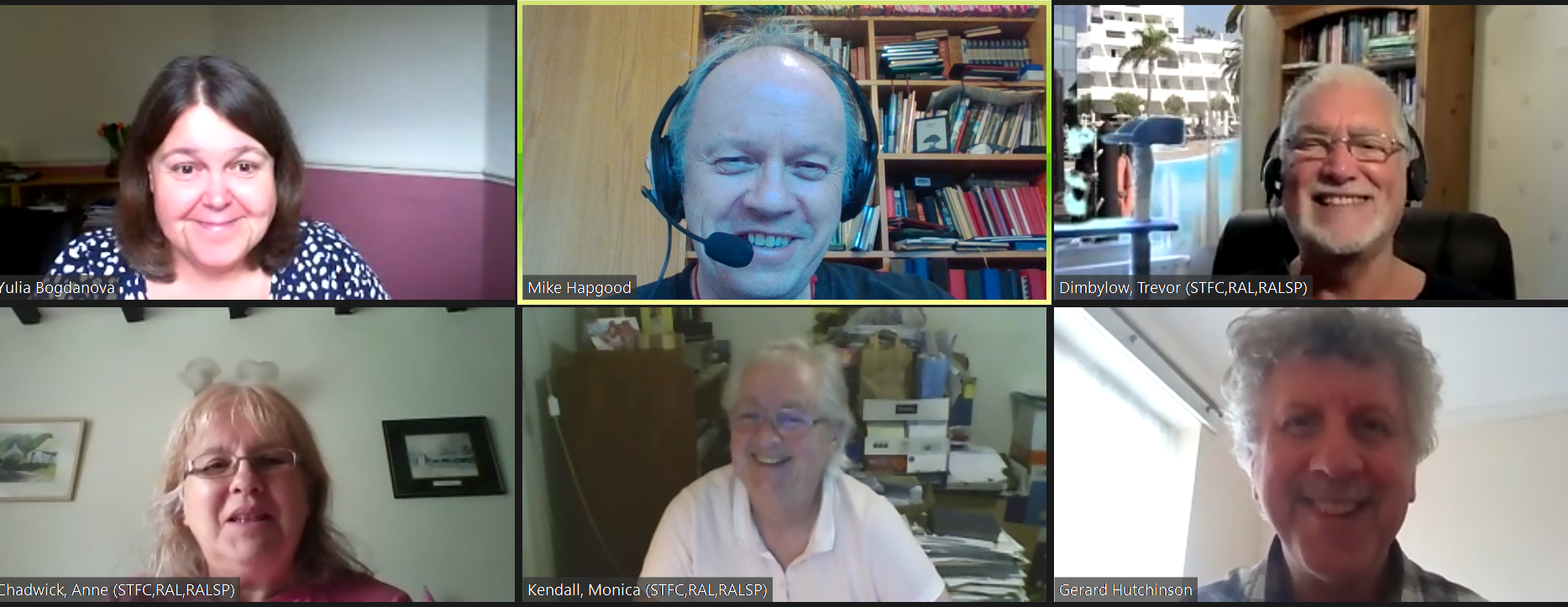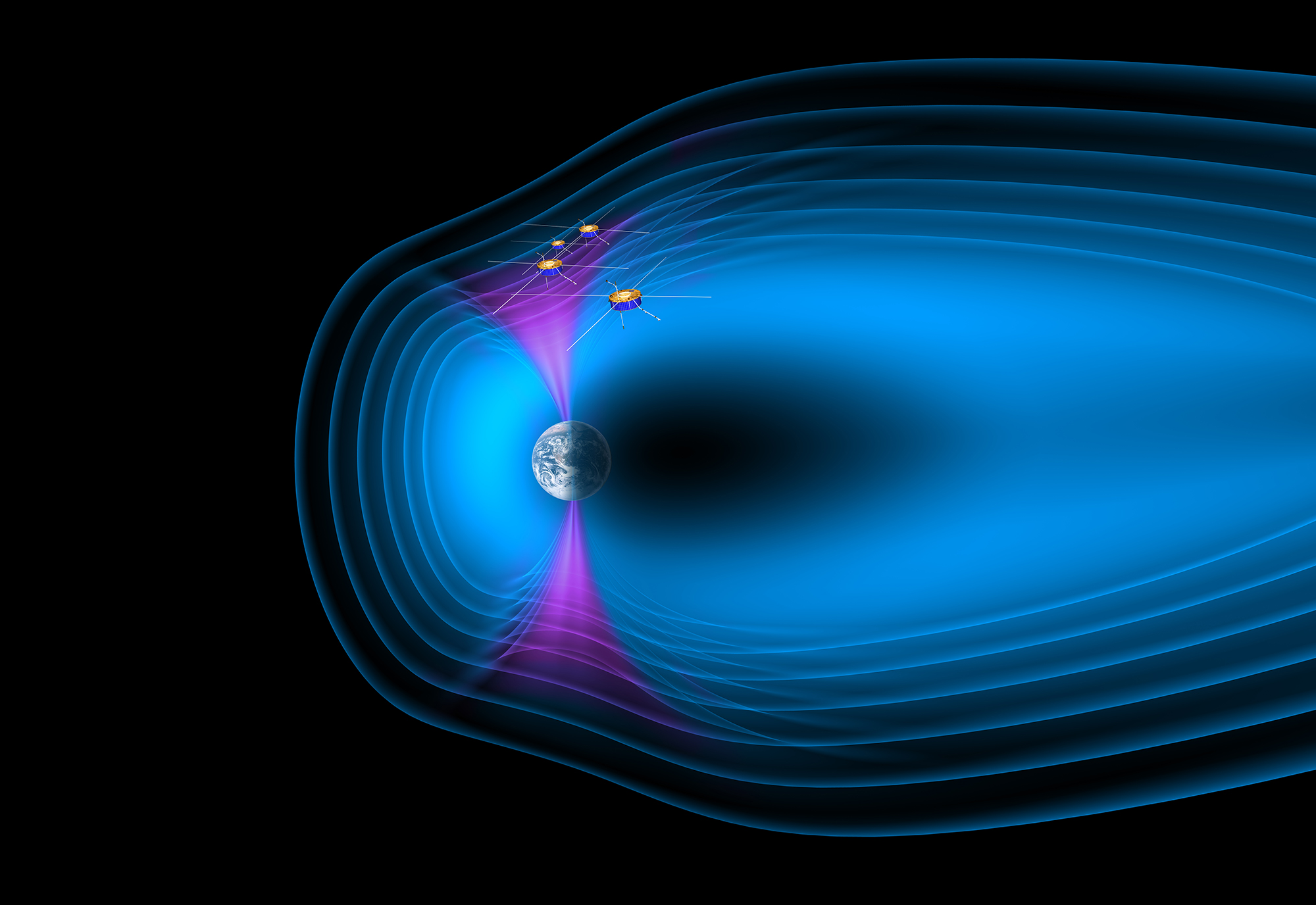Four years later on 16th July 2000 the first two satellites of the Cluster II mission were launched successfully, swiftly joined in orbit by the next two, on the 9th August.
This year the Cluster II mission celebrates its 20 anniversary and is still going strong.
The “aurora explorer"
For the last 20 years Cluster II has been helping scientists unravel the mysteries of how our magnetosphere, the protective bubble that surrounds the Earth, interacts with the solar wind, the stream of charged particles emitted by the Sun, which causes the beautiful aurora displays around the poles.
These processes are important because extreme 'space weather' events at the Earth caused by interactions between the solar wind and magnetosphere can disrupt key technologies like satellites and even the electric grid. Understanding how the magnetosphere interacts with the solar wind can help us protect our technology and could also help scientists plan for missions traveling far beyond Earth's protective bubble.
The Joint Science Operations Centre
The science operations for the spacecraft have been undertaken week in, week out for the last 20 years by a small team in RAL Space. The award winning Joint Science Operations Centre (JSOC) plan and prepare all the commands for the instruments on board, each of the four spacecraft was launched with 11 instruments. The team ensure that they can work in tandem as they orbit in formation to collect the data needed by the science community.
They have worked closely with the 11 science principal investigators, now 10, and the spacecraft operations team at ESA's European Space Operations Centre (ESOC) in Germany to optimise the science outputs and direct spacecraft manoeuvres.
Commands go up to the spacecraft every week, which means that though the RAL Space team plan science operations ahead 6 to 9 months at a time they then work on weekly sets of instrument commands throughout the year, each a few weeks before their execution, factoring in holidays and laboratory shut-down periods. This enables the principal investigator's teams to revise the commanding relatively close to execution. This overall system was originally developed in the mid-1990s and has survived, like the spacecraft themselves, in more or less the same format.
Anne Chadwick, Operations Manager at JSOC said “Earlier this year we had our first unexpected break in operations, unlike those planned during eclipses or manoeuvres for example. On 20th March 2020 ESOC suspended Cluster science temporarily, because of the Covid-19 pandemic. However, ESA requested JSOC to continue performing the weekly commanding operations cycles so that the instrument commands would be ready for execution once science could resume. On 4th April ESOC was able to begin switching on the science payload once again and the commands already supplied by JSOC were put into effect. After 20 years of largely smooth operations, it was a bit of a shock but we were all glad to see the mission up and running once again."

JSOC team celebrating Cluster II's 20th anniversary working from home. Credit: STFC RAL Space
The original mission life-time was supposed to be just 3 to 4 years but in 2006 the mission completed its 1000th orbit of the Earth, and in 2019, passed its 1000th planning cycle. These milestones weren't without complication. Much like the spectre of the Millennium Bug in 1999, where computer software hadn't been designed to compute the year 2000, the Cluster software codes needed to be re-written to accommodate a four-digit number to ensure the spacecraft could continue to function.
The team managed to do this while the spacecraft were still 100% operational, without missing a single day of science operations.
Scientific significance
Professor Mike Hapgood, who has provided key scientific guidance for JSOC since the project started in 1993 said, “It has been a delight to work on the Cluster mission and help the scientific community advance our understanding of how Earth's magnetosphere extracts energy from the solar wind to generate electric currents, plasma waves and energetic charged particles in the region of space around our planet. The instruments on Cluster observe all these features and help us understand how they come together to produce effects that are important for human activities, both in space and here on Earth."
Cluster II has been at the centre of a huge number of scientific discoveries over the last 20 years including contributing to much improved models of the magnetosphere, discovering and understanding the processes behind areas of permeability in our protective shield and working in tandem with ESA's Mars Express satellite to compare the effects of the Solar wind on the Earth and Mars, finding that the magnetic field is essential for keeping our atmosphere in place. The mission has also helped shape subsequent missions investigating the magnetosphere and solar wind including Solar Orbiter and SMILE.

The four Cluster spacecraft crossing the northern cusp of Earth's magnetosphere. Credit: ESA/AOES Medialab
Cluster II today
In recent years, the science operations team have taken new opportunities to exploit the unique formation of Cluster II and its changing orbit. Guest investigators have proved to be a new way to use the mission. Scientists are invited to define specific targets in the magnetosphere. The JSOC team then work with ESA who develop different flying configurations for the spacecraft and develop plans to get maximum use from the instruments on board. JSOC has also planned Cluster science observations in conjunction with other missions, for example during the Bepi Colombo flyby of Earth on Good Friday of 2020.
When the mission is finally deorbited between 2024 and 2026 its scientific life will still not be at an end, Cluster's observations will remain significant for years to come.
